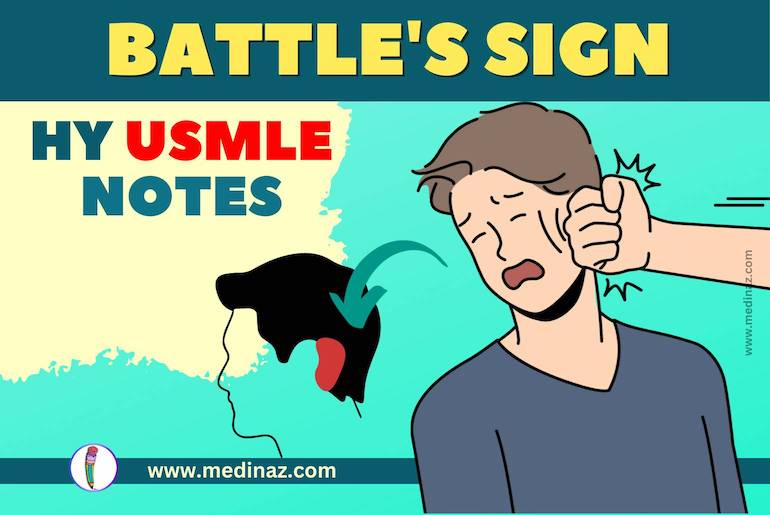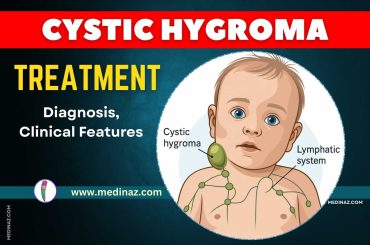Battle’s Sign USMLE Notes & Mnemonics contains all the high-yield points you need to know.
- Battle’s sign: Postauricular ecchymosis (bruising behind the ear) indicative of basilar skull fracture.
Pathophysiology
- Represents blood tracking along the path of least resistance from a fracture site in the posterior cranial fossa.
- Fracture may involve the temporal bone and mastoid process. (Ref)
Clinical Relevance
- Sign of basilar skull fracture, specifically longitudinal temporal bone fractures.
- Associated with other signs of basilar skull fracture like Raccoon’s eyes (periorbital ecchymosis), hemotympanum, CSF otorrhea/rhinorrhea.
Diagnosis
- Clinical observation: Bruising behind the ear that appears 1-2 days after injury.
- CT Scan: Imaging of choice for skull fractures.

Mnemonic for Basilar Skull Fracture Signs: “BATTLE’S CRASH“
- B = Battle’s sign
- A = Auditory canal blood (hemotympanum)
- T = Tinnitus or hearing loss
- T = Torn meninges (CSF otorrhea/rhinorrhea)
- L = Loss of consciousness
- E = Ecchymosis (Raccoon’s eyes)
- S = Sugar (glucose) in CSF
- C = Cranial nerve deficits
- R = Ringing in ears
- A = Anosmia (due to olfactory nerve damage)
- S = Seizures
- H = Halo sign (CSF on gauze pad)
Management
- Immediate: ABCs (airway, breathing, circulation), cervical spine stabilization.
- Neurosurgical consultation: For management of the underlying skull fracture.
- Antibiotics: Prophylactic treatment to prevent infections such as meningitis.
- Tetanus prophylaxis: If indicated.
- Monitoring and treatment: For potential complications like brain injury, CSF leak, and meningitis.
Complications
- Infection: Meningitis, brain abscess.
- Cranial nerve injury: Especially VII (facial nerve) with longitudinal fractures.
- CSF Leak: Otorrhea or rhinorrhea, risk of meningitis.
- Hearing loss: Due to damage to the middle ear or auditory nerve.
Prognosis
- Variable: Depends on extent of injury and presence of additional intracranial injuries or complications.
Note: Battle’s sign may not appear immediately after injury, so a high index of suspicion should be maintained in the appropriate clinical context. Always consider associated injuries with basilar skull fractures. Keep updated with the latest trauma management guidelines.
Check other important USMLE Notes
A Visual Learning Platform





